Strong Words To Use On A Resume
Strong words to use on a Resume





If you have ever had to write a resume for work or for an application, then you know the hardest part is figuring out what type of words to use that sound professional and and intelligent.
Example: If an application asks you if you have any relevant experience for a job at a day care center and you have experience, like you have babysat children. You would look at the words in the columns to see what words you should use that will help your resume stand out. You might put down “Have supervised and attended to children on a regular basis.”
I hope this is helpful to you.
More Posts from Study-astronomy-biology-ref and Others
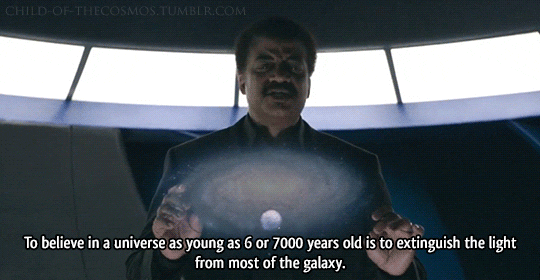
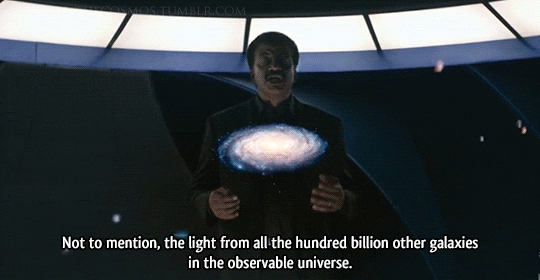
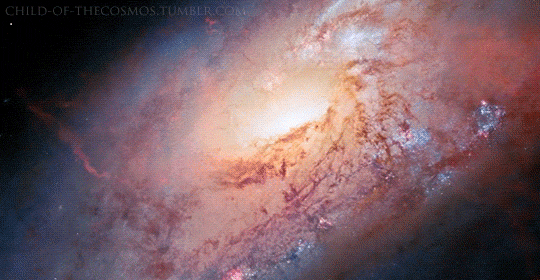
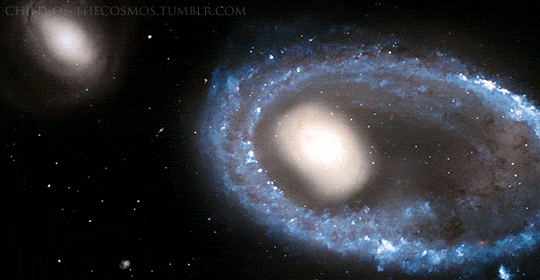

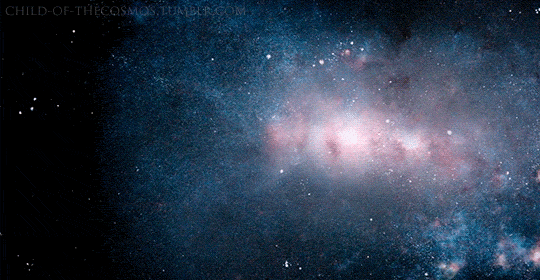
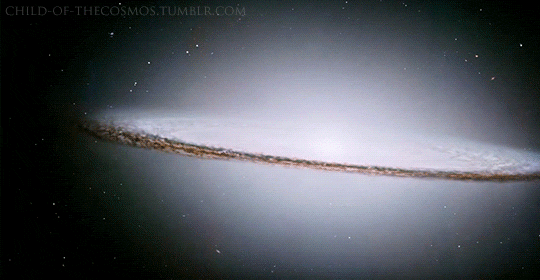
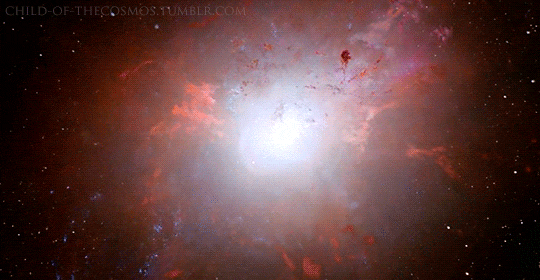
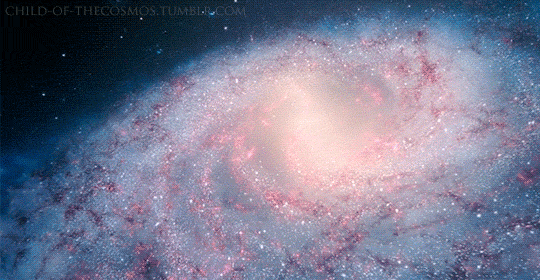
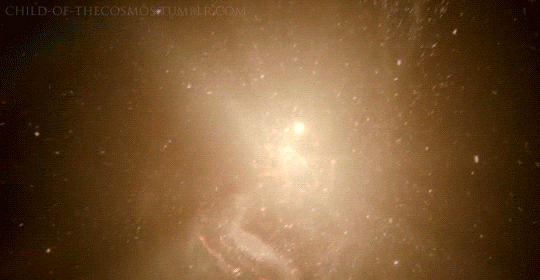
The Light Year: Part 3 of 3 (Part 1, Part 2) Episode 5: A Sky Full of Ghosts, Cosmos: A SpaceTime Odyssey




“NEW GALAXY DISCOVERED ORBITING THE MILKY WAY” You would think that scientists would have already discovered most of the galaxies around the Milky Way, but that does not seem to be the case. Astronomers have recently detected a dwarf galaxy orbiting the Milky Way called the Crater 2 dwarf. This galaxy was discovered through measuring its ‘half-light diameter’. Since galaxies don’t have actual definitive edges, astronomers measure galaxies by looking at the brightest part of the galaxy where half of the total amount of light from the it is emitted - half-light diameter. This galaxy has a half-light diameter of 7000 light years, which would look twice as big as the full moon if we could see it with the naked eye. Gabriel Torrealba and his colleagues at the University of Cambridge, the team that discovered this galaxy, was only able to find it by using a computer that looked for over-densities of stars in data (hinting at the possibilities of galaxies or something else) from images taken by a telescope in Chile. The galaxy has eluded the detection of the scientific community for so long only because its stars are spread out so thinly, giving it a ghost-like appearance. In addition, this dwarf galaxy is near four other new-found objects: the Crater globular star cluster as well as three dwarf galaxies in Leo - a group of objects that is now falling towards the Milky Way. Interestingly, this galaxy is quite new due to it retaining a round shape suggesting that it had never encountered a giant galaxy, otherwise gravity would have bent the dwarf out of shape.
Read more about this fascinating story on: https://www.newscientist.com/article/2084438-never-before-seen-galaxy-spotted-orbiting-the-milky-way/

The Carina Nebula - A Birthplace Of Stars
The Carina Nebula lies at an estimated distance of 6,500 to 10,000 light years away from Earth in the constellation Carina. This nebula is one of the most well studied in astrophysics and has a high rate of star formation. The star-burst in the Carina region started around three million years ago when the nebula’s first generation of newborn stars condensed and ignited in the middle of a huge cloud of cold molecular hydrogen. Radiation from these stars carved out an expanding bubble of hot gas. The island-like clumps of dark clouds scattered across the nebula are nodules of dust and gas that are resisting being eaten away by photons (particles of light) that are ionizing the surrounding gas (giving it an electrical charge).
Credit: NASA/Hubble
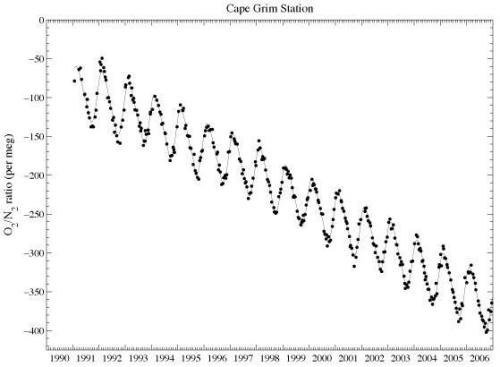
AIR!
Earth’s atmosphere recently crossed 400 ppm CO2 for the first time in millions of years and probably will not go back below that amount during any of our lifetimes. (http://tinyurl.com/bus4xpt). But did you know there’s something else changing in the atmosphere to go along with that CO2 rise?
It’s pictured in this graph. This gas is going down, decreasing in the atmosphere as CO2 goes up. That gas? Oxygen. Oxygen in the atmosphere is decreasing.
Be honest…did you just stop and take a deep breath? It really is kinda creepy to realize that the gas everyone is taught as a kid they need to survive is going down in the atmosphere.
Anyway, why is oxygen going down? The same reason that carbon is going up; burning of fossil fuels.
Keep reading

How do you observe that the Universe is expanding?
In 2011, the Nobel Prize in Physics was awarded to Saul Perlmutter, Brian Schmidt and Adam Riess for discovering that the Universe is expanding at an accelerating rate. We’d known for a while that the Universe has been expanding ever since its birth - but we didn’t know whether the expansion was slowing down, staying the same, or speeding up.
So, how exactly do you discover something like this?
Perlmutter, Schmidt, and Riess did it by observing a special type of supernovae: Type Ia supernovae. Supernovae are the explosive deaths of large stars, and they usually occur when a star runs out of fuel and collapses under its own weight, generating a shockwave that blasts its material out into space. However, this only happens when a star is big enough - the initial star has to have a critical, threshold mass, called the Chandrasekhar limit. Our sun, for example, won’t go supernova because the Chandrasekhar limit happens to be around 1.4 solar masses. When it runs out of fuel, our sun will instead gently blow off its outer layers and quietly become a dense core of carbon and oxygen, called a white dwarf.
But here’s the kicker: not all white dwarfs stay white dwarfs.
Some white dwarfs exist as one half of a binary system, where two stars orbit each other in a perpetual celestial dance. In some situations, the white dwarfs can actually “steal” matter from their partner star, siphoning it off and guzzling it up to grow more and more massive. Eventually, when their mass hits the Chandrasekhar limit, the white dwarf is ripped apart in a supernova.

Image Credit
This happens in binary systems all across the Universe, and because these white dwarfs all go supernova at exactly the same mass, this means we know exactly how bright the supernovae are. When they’re observed through telescopes, some look brighter and some look fainter depending on their distance - but because we know their actual intrinsic brightness, we can work out how far away they really are. (You could do this yourself using a more earthly standard candle.) For this reason, Type Ia supernovae are called “standard candles”.
In their observations, Perlmutter, Schmidt, and Riess realised that far away supernovae were more redshifted than the supernovae close by. “Redshift” is essentially a measure of how much the Universe has expanded since the light left the supernovae, so by comparing the distance and the redshift of the supernovae, they could create an “expansion history” of the Universe.
This showed pretty clearly that the universe isn’t just expanding, it’s accelerating - i..e, everything’s flying apart more quickly than it was yesterday, or a century, or a billion years ago. Why? Dark energy.
Hello there
As you can already tell, I haven't been really active (at all) on this account. The reason for this, to be honest, was the fact that Tumblr became stale to me, and besides that, I was very busy with my study for the university entrance exam for a year.
All of this caused this account to be abandoned for 2-3 years, which really not what I wanted at all because I created this account to help people with study and have reliable sources of information.
But I'm back (yay), and I’m trying to get back and resurrect this account again. There will be a few changes (since I changed a lot in the last few years).
1. My love for science is still there and even stronger now because... *drum rolls*... I’m studying science at university now! More specifically, biotechnology major, planning on an immunology minor. So yes, besides primary astronomy contents, I'm planning on posting more biology stuff!
-> The name of this blog changed: study-astronomy-ref to study-astronomy-biology-ref
2. If you don’t know, this account is member-based. Even though I will be more active in the next few months, I can't be 100% be sure about keeping the account active for too long because of personal jobs and study. I had recruit more members for this account a while ago, but it didn't end well.
-> So if anyone wants to contribute to this blog as a pure studyblr, message, please. There, of course, will be standards and I will select the best people to run this blog smoothly, educationally and actively. For the best to everyone!
3. To me, this account is for people (very communism). So besides the science news, findings and study references, slide in the DM if you want something more interesting on this blog (science art? some Q&A? other cool science stuff?). I would be very happy if this blog could reach more people with similar interest and it could be a fun, wholesome and interesting place for anyone that has a passion for science and study! Wooray!
Maybe that's all I have to say. Stay tuned for more contents!
Head up to the sky, aliens. Keep on curious.
Can you explain in a simple (???) way gravitational waves? please? do you know any books about it?
Sure!
According to Einstein’s General Theory of Relativity, what we think of as "empty space” isn’t nothing. Instead, space is more like a fabric that can be stretched, squashed, bent and shaped, and all matter and energy cause space to bend around them. The more mass or energy something has, the greater the bending of space around it it causes, a bit like heavier and lighter balls on a rubber sheet:

(Source - Note that this picture is a 2D analogy, and space is actually 3D! The bending of space isn’t something we can easily visualise, so we have to use analogies like the “balls on a rubber sheet” analogy - as long as we recognise their shortcomings!)
Let’s imagine the Sun is a bowling ball dropped onto a rubber sheet, creating a huge dent in space. And now let’s roll a marble - Earth - onto that sheet too. IF the marble is rolling too slowly, it will fall into the dent and roll around a few times, spiralling in and eventually colliding with the ball. If the marble is rolling too quickly, its path will be bent, but it will escape. If it’s rolling at a certain speed, however, the marble will roll around the bowling ball and go into orbit around it. (Here’s another shortcoming of the rubber sheet analogy - real rubber sheets have friction, so the marble would eventually slow down and roll in towards the bowling ball. Space, however, has no friction, so the Earth can stay in orbit around the Sun for a long time.) In other words, this bending of space is what we refer to as gravity!
In Newton’s view of gravity, Earth would naturally follow a straight line through space, but its path would be bent towards the Sun by a mysterious pulling force. That force holds the planets in orbit around the Sun and pulls apples to Earth, but Newton couldn’t explain why - a mysterious influence that spread out through space, called the gravitational field, somehow caused bodies to attract one another. Einstein explained that massive objects curve the space around them. Earth would also naturally follow a straight line through space, but the space itself is curved, forcing Earth to follow a curved path - it’s a bit like trying to walk in a straight line along a hill. Try as you might, your path will have to bend to follow the contours of the landscape. According to Einstein, gravity isn’t really a “force” as such but an effect of this bending of space. Matter and energy tell space how to bend; space tells matter and energy how to move. That’s all gravity is. The gravitational field isn’t some mysterious entity in space - the gravitational field is the space itself! Here’s a nice little video to help you visualise all this:
(I’m oversimplifying a little, btw, saying that gravity is the bending of “space.” In Einstein’s theory, the three dimensions of space are unified with time into one four-dimensional fabric, the space-time continuum. So gravity isn’t just the bending of space, but the warping of time too - you can’t change one without changing the other! Gravity actually slows time down, so you would age slightly faster in space than you do at Earth’s surface. The difference is incredibly tiny, but measurable - time passes more quickly for the GPS satellites than it does for us here on Earth, and what the clock of a GPS satellite would measure as “one day” is about 38 microseconds shorter than what we measure as “one day.” That doesn’t sound like a big difference, but engineers have to take it into account when designing GPS systems - if they didn’t account for this, your GPS location would drift by as much as 10 kilometres per day! So this isn’t just some abstract theory - this is a real effect that’s already important for technology you probably use every day.)
General Relativity has now been through many, many tests and has passed every one with flying colours, and all of its predictions had been verified by the beginning of 2016 except one - gravitational waves.
What would happen if we could somehow destroy the Sun? Newton believed that there was a mysterious gravitational connection between the Sun and Earth, holding Earth in its orbit, that would instantly be broken if the Sun was destroyed. Earth would instantly fly out of its orbit in a straight line. Einstein, however, didn’t like this - his Special Theory of Relativity (which he put out 10 years before the General Theory) says that no information could ever travel faster than light. It takes about 8 minutes for the Sun’s light to reach us, so how could Earth fly out of its orbit instantly? That would let us know the Sun had been destroyed 8 minutes before the light from the Sun’s destruction reached us. Einstein wasn’t comfortable with this.
Thankfully, General Relativity resolves the paradox - if you got rid of the Sun, Earth would still stay in its orbit for a while, because the space-time around the Sun would still be curved. Meanwhile, at the place where the Sun was, space-time would spring back to its original flat state, and that would ripple through the surrounding space-time as everything adjusted back to where it was. That ripple - a gravitational wave - would spread out through space at the speed of light, so the space around Earth would stay curved and Earth would remain in its orbit until the same time the light from the Sun’s destruction passed us - at which point the gravitational wave would ripple through the space around Earth and restore it back to its original flat state, and Earth would finally leave its orbit.

Of course, in reality, stars don’t just disappear. But the gravitational environment does change. Stars move around, and the fabric of space-time also moves with them. Stars explode. Black holes and neutron stars form, putting huge dents in space-time, and sometimes they collide. All these events are a bit like changing the environment in a still pond - stars and planets gently orbiting are like ducks gently gliding through the pond, creating gentle ripples as they disturb its surface - and black hole collisions are more like throwing a rock into the pond and sending out massive waves. Almost everything in our universe produces gravitational waves, but most of the time, they’re too tiny to detect. (That’s why I said in real space the Earth can orbit the Sun for “a long time,” and not “forever.” Earth is constantly sending out very faint gravitational waves as it rolls around the Sun and moves through the fabric of space-time. Those waves are too small to detect, but they very, very slowly sap Earth’s energy and cause it to very, very slowly spiral in to the Sun. In reality, that would take unimaginable trillions upon trillions of years, and Earth will probably be destroyed by the dying Sun long before that! Even if Earth manages to survive that, it’s more likely to be pulled out of orbit by an incredibly rare passing star or knocked out by unpredictable gravitational tugs from the other planets or something before it spirals into the Sun. Orbits are stable for a very, very, very, very long time.) More intense sources of gravity than our puny Earth and Sun, however - things like neutron stars and black holes - can generate detectable gravitational waves.
Our first indirect evidence of gravitational waves came in 1984, when the American astronomers Russel A. Hulse and Joseph A. Taylor discovered a binary neutron star system - two intense sources of gravity orbiting each other very rapidly. As they orbited each other, they sent out huge gravitational ripples - a bit like stirring up that duck pond with two oars whirling round and round - and lost energy by a detectable amount. Hulse and Taylor found that their orbital period slowed down by about 75 milliseconds per year - short, but detectable! That slowing exactly matched the predictions of gravitational wave theory and got its discoverers the Nobel Prize for Physics in 1993.

(Source)
But gravitational waves weren’t directly observed until 2015 (and confirmed until this year) by a detector named LIGO (the Laser Interferometer Gravitational wave Observatory). All LIGO is is basically two beams of laser light travelling between two pairs of mirrors oriented at right angles to each other, like this, so you can measure how space-time is stretched in one direction and squashed in the other by a passing gravitational wave by recording how long it takes the light to travel from one mirror to the other*:


(Source for both images: http://phys.org/news/2016-02-ligo.html)
LIGO’s two “arms” (the two beams of light) are each 4 kilometres long, and a gravitational wave passing through the detector stretches or squashes each of the “arms” by a ridiculously small amount - the ones LIGO actually found stretched and about 1/10,000th the width of a proton. As you can imagine, the LIGO physicists had to account for many, many different effects that shook the detector too. But gravitational waves distort the two beams in a predictable way that would make that distortion stand out from ordinary passing trucks or distant earthquakes, and by February 11th, 2016, the LIGO physicists were confident enough that they really had detected a faint ripple in space-time passing through their detector. The signal was consistent with a gravitational wave from two black holes in orbit around each other, spiralling in to one another.

(Source)
This is exciting for two reasons:1) It confirms the last outstanding prediction of General Relativity, and2) It opens up a whole new field of astronomy! Every so often astronomy is revolutionised by the discovery of new things we can look at from space. Originally all we could detect was the visible light that we could see with our eyes and telescopes. But soon we learned to build radio telescopes, and that opened up a whole new world to us - we could see phenomena that were invisible in ordinary light. With space telescopes we could see the sky in gamma rays, x-rays, ultraviolet and infra-red light as well. Now we could see the explosions of distant stars halfway across the observable Universe, look at clouds of gas and dust too cool to shine in visible light, and peer through other dark clouds to see stars forming inside. We also found particles we could see coming from space, too - neutrinos from the Sun and from supernovae, and cosmic rays. These opened up other windows on the Universe. And now we have gravitational waves - yet another new way of “seeing.” Gravitational wave astronomy will let us study some of the most puzzling events in the Universe, like colliding neutron stars, or black holes falling into other black holes - events we’ve never been able to see before.
So I hope that helps, Anon!
As for books, the problem is gravitational waves were detected so recently I don’t know of any books that have come out since then on the subject, so everything will be out of date. However, the basic physics has stayed the same since Einstein first predicted them, so any good popular book on general relativity (Spacewarps by John Gribbin, The Fabric of the Cosmos by Brian Greene and Travelling At the Speed of Thought: Einstein and the Quest for Gravitational Waves by Daniel Kennefick are good examples) should give you some good insight - just replace phrases like “if we detect gravitational waves” with “when we detected gravitational waves!”
(*Yes, yes, I know LIGO isn’t actually measuring the time taken for light to travel down each “arm,” but the interference of the laser beams. Still, that interference allows us to infer the travel time for the light, so I’m simplifying.)


SwRI’s Parker discovers moon over Makemake in the Kuiper Belt A Southwest Research Institute-led team has discovered an elusive, dark moon orbiting Makemake, one of the “big four” dwarf planets populating the Kuiper Belt region at the edge of our solar system. The findings are detailed in the paper “Discovery of a Makemakean Moon,” published in the June 27 issue of Astrophysical Journal Letters.
“Makemake’s moon proves that there are still wild things waiting to be discovered, even in places people have already looked,” said Dr. Alex Parker, lead author of the paper and the SwRI astronomer credited with discovering the satellite. Parker spotted a faint point of light close to the dwarf planet using data from Hubble’s Wide Field Camera 3. “Makemake’s moon – nicknamed MK2 – is very dark, 1,300 times fainter than the dwarf planet.”
A nearly edge-on orbital configuration helped it evade detection, placing it deep within the glare of the icy dwarf during a substantial fraction of its orbit. Makemake is one of the largest and brightest known Kuiper Belt Objects (KBOs), second only to Pluto. The moon is likely less than 100 miles wide while its parent dwarf planet is about 870 miles across. Discovered in 2005, Makemake is shaped like football and sheathed in frozen methane.
“With a moon, we can calculate Makemake’s mass and density,” Parker said. “We can contrast the orbits and properties of the parent dwarf and its moon, to understand the origin and history of the system. We can compare Makemake and its moon to other systems, and broaden our understanding of the processes that shaped the evolution of our solar system.”
With the discovery of MK2, all four of the currently designated dwarf planets are known to host one or more satellites. The fact that Makemake’s satellite went unseen despite previous searches suggests that other large KBOs may host hidden moons.
Prior to this discovery, the lack of a satellite for Makemake suggested that it had escaped a past giant impact. Now, scientists will be looking at its density to determine if it was formed by a giant collision or if it was grabbed by the parent dwarf’s gravity. The apparent ubiquity of moons orbiting KBO dwarf planets supports the idea that giant collisions are a near-universal fixture in the histories of these distant worlds.
top Image: illustration shows Makemake’s bright red surface and the inferred darker surface of the moon, known as MK2. Image Courtesy of NASA/SwRI/Alex Parker
lower Image: Different views of the Makemake system taken two days apart. Image Courtesy of NASA/Hubble WFC3/SwRI/Alex Parker
-
 openurmint liked this · 1 week ago
openurmint liked this · 1 week ago -
 sxsarahxs liked this · 1 week ago
sxsarahxs liked this · 1 week ago -
 kiem500 liked this · 1 week ago
kiem500 liked this · 1 week ago -
 wlillowsworld42 reblogged this · 2 weeks ago
wlillowsworld42 reblogged this · 2 weeks ago -
 farawayforest liked this · 2 weeks ago
farawayforest liked this · 2 weeks ago -
 reedt1120 liked this · 3 weeks ago
reedt1120 liked this · 3 weeks ago -
 saltytimemachinebasement liked this · 3 weeks ago
saltytimemachinebasement liked this · 3 weeks ago -
 while-you-were-sleeping-x liked this · 1 month ago
while-you-were-sleeping-x liked this · 1 month ago -
 superunresistable liked this · 1 month ago
superunresistable liked this · 1 month ago -
 theschwawashere reblogged this · 1 month ago
theschwawashere reblogged this · 1 month ago -
 subtlesolitude-tailoredtaste reblogged this · 1 month ago
subtlesolitude-tailoredtaste reblogged this · 1 month ago -
 vaspider liked this · 2 months ago
vaspider liked this · 2 months ago -
 ellethepalindrome liked this · 2 months ago
ellethepalindrome liked this · 2 months ago -
 sunsetwish liked this · 2 months ago
sunsetwish liked this · 2 months ago -
 zombiewithamustache reblogged this · 3 months ago
zombiewithamustache reblogged this · 3 months ago -
 brexana liked this · 3 months ago
brexana liked this · 3 months ago -
 sugarplumfizzlenutz liked this · 3 months ago
sugarplumfizzlenutz liked this · 3 months ago -
 kiki-miserychic reblogged this · 3 months ago
kiki-miserychic reblogged this · 3 months ago -
 91thornside liked this · 4 months ago
91thornside liked this · 4 months ago -
 dreamedbefore liked this · 4 months ago
dreamedbefore liked this · 4 months ago -
 brainddump reblogged this · 4 months ago
brainddump reblogged this · 4 months ago -
 lolabluee liked this · 4 months ago
lolabluee liked this · 4 months ago -
 staletomato liked this · 4 months ago
staletomato liked this · 4 months ago -
 vivienroselind liked this · 4 months ago
vivienroselind liked this · 4 months ago -
 stevie1434 reblogged this · 4 months ago
stevie1434 reblogged this · 4 months ago -
 techne-gnosis liked this · 4 months ago
techne-gnosis liked this · 4 months ago -
 finder-of-things reblogged this · 4 months ago
finder-of-things reblogged this · 4 months ago -
 midwest-apples liked this · 4 months ago
midwest-apples liked this · 4 months ago -
 faebay reblogged this · 4 months ago
faebay reblogged this · 4 months ago -
 alwayss-neverr liked this · 4 months ago
alwayss-neverr liked this · 4 months ago -
 you-like-the-bad-boys liked this · 4 months ago
you-like-the-bad-boys liked this · 4 months ago -
 potatobi liked this · 5 months ago
potatobi liked this · 5 months ago -
 5tr4n93r-th1n95 liked this · 5 months ago
5tr4n93r-th1n95 liked this · 5 months ago -
 ahraeyah liked this · 5 months ago
ahraeyah liked this · 5 months ago -
 little-miss-narwhal liked this · 5 months ago
little-miss-narwhal liked this · 5 months ago -
 claytonin1 liked this · 5 months ago
claytonin1 liked this · 5 months ago -
 classlessroyalty reblogged this · 5 months ago
classlessroyalty reblogged this · 5 months ago -
 saltwatersuperhighway reblogged this · 5 months ago
saltwatersuperhighway reblogged this · 5 months ago -
 foundwhatiwaslookingfor liked this · 5 months ago
foundwhatiwaslookingfor liked this · 5 months ago -
 indietalal liked this · 5 months ago
indietalal liked this · 5 months ago -
 alwayzmook1 reblogged this · 5 months ago
alwayzmook1 reblogged this · 5 months ago -
 i-darkling liked this · 5 months ago
i-darkling liked this · 5 months ago -
 annatxu5w liked this · 5 months ago
annatxu5w liked this · 5 months ago

This is a studyblr for everyone have some passion for science, especially astronomy and biology
129 posts
